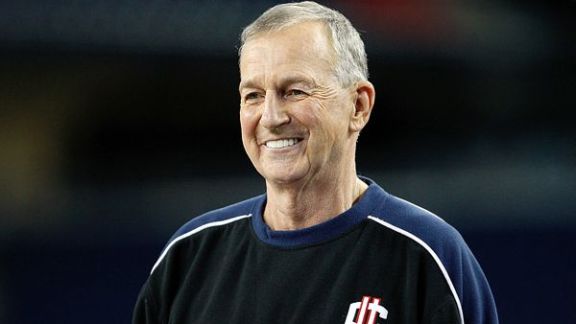Jim Calhoun Hints At Retirement: How Will UConn Sustain His Progress?
Posted by Chris Johnson on September 7th, 2012Christopher Johnson is an RTC columnist. He can be reached @ChrisDJohnsonn.
When programs are so closely associated with one legendary coach, it’s often difficult to properly gauge their sustainability and staying power. Coaching leadership and innovation, when harnessed in the right ways, can ignite and maintain momentum. In these instances, when sideline legends engineer complete turnarounds at places with little or no previous historical success, the burning question is whether the building project and subsequent rise has set the stage for long-term security and continuity, or if the inevitable coaching change will undo the trailblazing predecessor’s foundational work. UConn men’s basketball is one of these programs. The Huskies’ success is impossible to extract from its longtime head coach Jim Calhoun. UConn garnered some regional recognition as a member of the Yankee Conference under Hugh Greer, but it was only when Calhoun took over – not to mention UConn’s move to the Big East in 1979, a conference created with the goal of assembling the region’s best basketball programs – that the Huskies truly hit their stride on the national stage. In 1986-87, Calhoun’s first season as head coach, UConn finished 9-19. Two years later, the Huskies won their first national postseason tournament when they knocked off Ohio State en route to an NIT championship. By 1990, UConn had claimed its first Big East title along with a #1 seed in the NCAA Tournament. More importantly, UConn debuted its new on-campus home, Gampel Pavilion, signaling a positive turn in the school’s administrative support for the ascendant Huskies. Nine Big East titles and three National Championships later, UConn has clearly established itself among the college hoops elite. It seems unlikely the Huskies will ever recede into their pre-Calhoun irrelevance, but there remains a sneaking suspicion that UConn will lose at least some measure of its national prestige once their pioneering head coach calls it quits.

It sounds as if Calhoun is ready to leave the program he elevated to elite status (Photo credit: Streeter Lecka/Getty Images).
What once felt like an unimaginable outcome – that Calhoun, after morphing UConn into the national powerhouse it is today, would step down – has inched closer and closer to reality. In fact, the timetable for his retirement could dictate that Calhoun has seen his last moments on the Huskies sidelines. In a candid interview with SI.com’s Mark Blaudschun, Calhoun spoke with humbling acceptance and resignation of the circumstances surrounding his health and the program he practically built from the ground up. Calhoun, 70, is coming off his 26th season at the helm, just two years removed from winning his third – and arguably his most impressive, given the talent on hand – national championship. The Huskies, who returned much of their championship rotation (minus Kemba Walker) and welcomed in one of the nation’s best recruiting classes, vastly underperformed in their title-defense season. Calhoun missed three games due to recruiting violations, and UConn was notified it had been banned from the 2013 postseason thanks to its inability to meet the NCAA’s increasingly stringent APR standards. Still, Calhoun, undeterred by the variety of factors weighing against him, thought he could extend his career on the sidelines, if only to lead UConn out of the grim short-term outlook it now faces. That may still be the case, but an offseason bike injury requiring hip surgery seems to have sapped the competitive drive that has long defined Calhoun’s coaching psyche. From Blaudschun’s story:









































